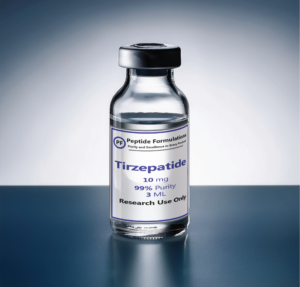
Customer Satifaction Garanteed
Accuracy Garanteed
Security Garanteed
Purity Granteed
Customer Satifaction Garanteed
Accuracy Garanteed
Security Garanteed
Purity Granteed
Dermorphin Overview
Dermorphin
Is a naturally occurring peptide derived from the skin of certain frog species, particularly the South American Phyllomedusa genus. It has garnered interest for its potent analgesic properties, making it a subject of research in pain management.
The chemical formula for Dermorphin is C₁₄H₁₈N₄O₃S, with a molecular weight of approximately 318.4 Da (Daltons). This peptide consists of a sequence of 13 amino acids, which contributes to its high affinity for opioid receptors in the body.
Dermorphin functions primarily as a selective agonist for the μ-opioid receptor, providing significant pain relief with potentially fewer side effects compared to traditional opioids. Its unique mechanism of action may result in reduced tolerance development, making it a compelling option for chronic pain management.
In preclinical studies, Dermorphin has shown promising results in alleviating pain, and its efficacy appears to be superior to some conventional opioids. Research is ongoing to better understand its pharmacological profile and therapeutic applications, including potential use in treating conditions like neuropathic pain.
Dermorphin is typically administered via injection or transdermal delivery, with dosages tailored to individual patient needs. As research continues, the optimal delivery methods and dosing regimens are being explored to maximize therapeutic outcomes.
While Dermorphin demonstrates significant analgesic potential, safety considerations are essential. Some users may experience side effects, including sedation or gastrointestinal disturbances. Due to its opioid-like effects, careful monitoring is advised, particularly in populations at risk for substance use disorders.
Current research efforts are focused on further elucidating Dermorphin’s mechanisms and exploring its applications in various pain management scenarios. The ongoing investigation into its benefits and risks may pave the way for novel therapies in the treatment of pain.
In conclusion, Dermorphin is a peptide with notable analgesic properties derived from natural sources. Its ability to act on opioid receptors positions it as a promising candidate for pain relief, potentially offering advantages over traditional opioid medications. Continued research will enhance understanding of its efficacy and safety in clinical settings.
For more detailed information on research findings or specific uses of Dermorphin, consult scientific literature and product resources.
Packing and Storage
Packing
Vial Type: Use high-quality glass vials with airtight seals to prevent contamination.
Desiccant: Include a desiccant packet to absorb moisture and maintain stability.
Labeling: Clearly label each vial with the peptide name, concentration, date of synthesis, and any relevant handling instructions.
Storage
Temperature: Store at -20°C to -80°C for long-term storage. If you need to use it more frequently, some peptides can be stored at 4°C for short periods.
Protection from Light: Store vials in opaque containers or wrapped in aluminum foil to protect from light exposure.
Avoid Freeze-Thaw Cycles: Minimize the number of freeze-thaw cycles to preserve peptide integrity.
Included with Delivery
Included with the delivery will be:
(1) 3 mL vial of reconstitution solution
(10) Sterile 1 mL syringes
(10) Alcohol pads
Analgesics: Mechanisms, Types, and Applications
Analgesics are medications designed to relieve pain without causing loss of consciousness. They play a crucial role in managing pain associated with various conditions, from acute injuries to chronic illnesses. Here’s an overview of the mechanisms behind analgesics, the different types, and their applications:
Mechanisms of Action
Pain Receptor Modulation: Analgesics can interact with pain receptors (nociceptors) in the nervous system to alter the perception of pain. They may block or modify the transmission of pain signals to the brain.
Neurotransmitter Regulation: Some analgesics work by affecting neurotransmitters involved in pain signaling. For example, certain drugs can increase levels of endorphins or serotonin, which can inhibit pain transmission.
Inflammation Reduction: Non-steroidal anti-inflammatory drugs (NSAIDs) reduce pain by decreasing inflammation at the site of injury or disease. They inhibit enzymes like cyclooxygenase (COX) that are involved in the inflammatory process.
Opioid Receptor Activation: Opioid analgesics bind to specific receptors in the brain and spinal cord (opioid receptors) to reduce the perception of pain. They alter the way the brain responds to pain signals.
Local Anesthesia: Local anesthetics block nerve signals in a specific area of the body, preventing pain sensations from reaching the central nervous system.
Types of Analgesics
Non-Steroidal Anti-Inflammatory Drugs (NSAIDs):
- Mechanism: Reduce inflammation and pain by inhibiting COX enzymes.
- Examples: Ibuprofen, aspirin, naproxen.
- Applications: Used for mild to moderate pain, such as headaches, muscle aches, and arthritis.
Acetaminophen (Paracetamol):
- Mechanism: The exact mechanism is not fully understood but is believed to involve central inhibition of prostaglandin synthesis.
- Examples: Tylenol.
- Applications: Effective for mild to moderate pain and fever, often used when NSAIDs are contraindicated.
Opioids:
- Mechanism: Bind to opioid receptors in the brain and spinal cord to block pain signals.
- Examples: Morphine, oxycodone, hydrocodone.
- Applications: Used for severe pain, such as post-surgical pain or cancer-related pain.
Adjuvant Analgesics:
- Mechanism: These are drugs primarily used for other conditions but have pain-relieving properties.
- Examples: Antidepressants (e.g., amitriptyline), anticonvulsants (e.g., gabapentin).
- Applications: Often used for neuropathic pain and chronic pain conditions.
Local Anesthetics:
- Mechanism: Block nerve conduction in a specific area.
- Examples: Lidocaine, bupivacaine.
- Applications: Used for local pain relief during minor surgical procedures and dental work.
Research and Applications
Chronic Pain Management: Research is focused on developing new analgesics that provide effective long-term relief for chronic pain conditions, such as fibromyalgia and neuropathic pain.
Personalized Pain Management: Advances in genomics and personalized medicine are leading to more tailored approaches to pain management, optimizing analgesic efficacy and minimizing side effects.
Non-Opioid Alternatives: There is ongoing research into non-opioid analgesics and multimodal pain management strategies to reduce reliance on opioids and mitigate risks such as addiction and overdose.
Challenges and Considerations
Side Effects: Analgesics can have side effects ranging from gastrointestinal issues with NSAIDs to addiction and respiratory depression with opioids. Monitoring and managing these side effects is crucial.
Drug Interactions: Analgesics can interact with other medications, potentially leading to adverse effects or reduced efficacy. Careful consideration of drug interactions is necessary when prescribing pain relief.
Pain Assessment: Accurate assessment of pain is essential for effective treatment. Pain management strategies should be tailored to individual patient needs and adjusted based on their response.
Analgesics are essential tools in pain management, offering relief across a wide range of conditions. Continued research and development aim to improve the efficacy, safety, and accessibility of pain relief options.

